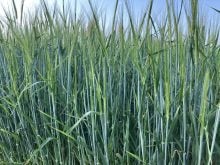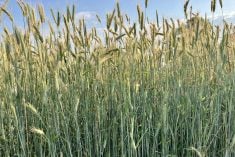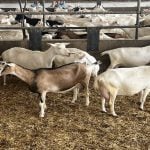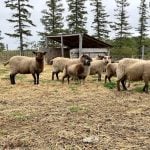The imposition of 25 per cent tariffs on Canadian and Mexican exports to the U.S., and retaliatory tariffs by the two countries, are likely to cause significant trade upheavals throughout North America until they are removed. The U.S., as previously announced, imposed its tariffs on March 3 after delaying its move for 30 days. The assumption in early March was that the tariffs would apply to all exports, including cattle and beef from the two countries.
Many had earlier hoped the top two U.S. trading partners could persuade the Trump administration to further delay tariffs that would apply to over US$918 billion worth of U.S. imports from the two countries, from autos to energy. This could wreak havoc on the integrated North American economy, with the automotive sector hit particularly hard. In late February, Trump referred to his desire for “reciprocal” tariffs to match the duty rates and offset the trade barriers of all countries, including France.
U.S. tariffs and counter-tariffs by Canada and Mexico of any size would significantly affect the highly integrated nature of the agricultural trade between the three countries. The beef industries in all three countries would be especially affected as trade in cattle and beef is vital for each country. Consider the following facts. Canada exported one billion pounds of its beef to the U.S. in 2024 while Mexico exported 600 million pounds of beef. In turn, the U.S. exported 103.5 million metric tons of beef to Canada in 2024 worth US$877 million. It exported 232.5 metric tons of beef worth US$1.35 billion to Mexico.
Read Also

Cattle Market Summary
Break-evens, cow and calf prices, plus market summaries courtesy of Canfax and Beef Farmers of Ontario. Cost of Production October…
In late February, Canadian market analyst Kevin Grier outlined what he said were key factors when considering tariffs. One-quarter of all Canadian beef production goes to the U.S. Net exports to the U.S. after U.S. imports to Canada amount to 20 per cent of Canadian production. A total of 780,000 cattle moved from Canada to the U.S. last year, according to USDA. About 80 per cent or 615,000 head were fed or non-fed cattle for immediate slaughter — the rest were feeder cattle. The slaughter cattle exports represent about 16 per cent of total Canadian slaughter cattle sales, he said.
The U.S. represents about 15 per cent of Canadian-fed cattle marketings, said Grier. Canadian cattle are very important to plants such as JBS Hyrum, Utah; and JBS Souderton Inc., Pennsylvania; as well as Agri Beef in Yakima, Washington and Jerome, Idaho, plus Tyson Fresh Meats Inc. in Pasco, Washington. Long Prairie Packing in Minnesota also augments its kill with Canadian dairy culls, he says.
Canadian cattle can represent up to 30 per cent of the kill in some of these plants, depending on the time of year, said Grier. No matter how important Canadian cattle are to these U.S. plants, it would be difficult to ask packers to pony up an additional $750 per head when they were already losing nearly US$200 per head (in late February). In fact, given margins now, they might not mind having fewer cattle to process, he said.
This all means there could be an extra 400,000 fed cattle or 8,000 to 9,000 head per week looking for a plant in Canada, said Grier. In Canada, it is easy to see how the big two packers would sharply cut production. They are not going to suddenly find better markets for 20 per cent of their production. Four-day or even three-day weeks are foreseeable for as long as the tariffs last. This happens at a time of cattle not being wanted in the U.S. due to the tariff, said Grier. One can only hope the tariffs are short-lived.
















